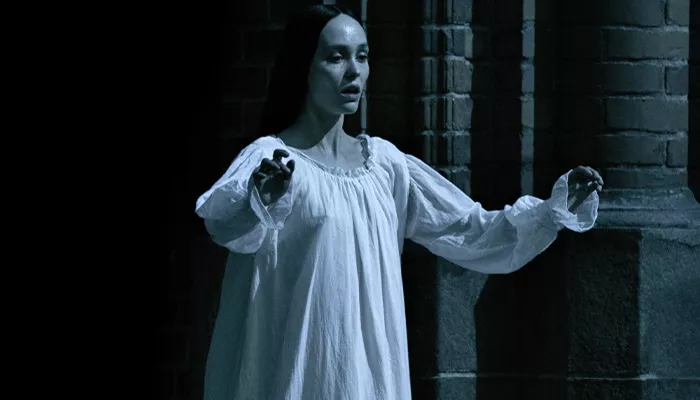Robert Eggers’ remake of Nosferatu has exceeded the expectations of many, transforming the iconic 1922 silent film into a profound exploration of sin, redemption, and humanity’s internal battle between good and evil. As a self-proclaimed Nosferatu expert and a student of German history, I initially approached Eggers’ version with skepticism, questioning how a post-WWI narrative could be reinterpreted in the modern day. However, after experiencing the film over the winter break, my doubts faded as I was entranced by the director’s insightful and fresh take on the classic tale.
Eggers’ reinterpretation repositions the story’s focus, shifting the spotlight from the eerie supernatural elements to the psychological and spiritual dimensions of the characters. In his version, the struggle between intellect and desire, good and evil, is laid bare. The story centers on Thomas and Ellen, whose lives are upended when Thomas travels to a remote castle to assist the enigmatic Count Orlok with a property transaction. Upon discovering that Orlok is the vampire Nosferatu, he embarks on a reign of terror that threatens the very fabric of their lives. While the core plot remains intact, Eggers delves deeper into Ellen’s tragic psychological struggle, making her a central figure in the film.
Lily-Rose Depp delivers a masterful performance as Ellen, her portrayal capturing the complexity of her character. She perfectly embodies Ellen’s internal conflict, vacillating between a demonic allure toward Nosferatu and her love for Thomas. Depp’s portrayal is both haunting and mesmerizing, making it a career-defining performance. The emotional depth she brings to the role enhances the film’s exploration of humanity’s darker impulses.
At its core, Eggers’ Nosferatu is a chilling meditation on original sin. Drawing on the biblical concept of the inherent darkness within all humans, the film examines the tension between reason and desire. As St. Paul writes in Romans 7:15, “I do not do what I want, but I do the very thing I hate.” Nosferatu becomes the personification of sin, tempting characters to surrender to their most primal instincts, further empowering his evil influence. The film’s portrayal of how greed, lust, and ambition allow Nosferatu to infiltrate society is a stark reminder of the destructive power of sin in human nature.
Ellen’s struggle to reconcile her disordered desires with her love for Thomas is a powerful reflection of the inner conflict that plagues us all. Nosferatu, in his role as a temptor, seeks to convince her that good is futile and that surrendering to darkness is inevitable. Yet, in the film’s poignant ending, Ellen chooses love and sacrifices herself in a Christ-like act of redemption. This final act serves as a poignant symbol of hope, demonstrating that despite our fallen nature, goodness remains a force capable of triumph.
Eggers weaves a tapestry of characters caught in the spiritual struggle between light and darkness. Aaron Taylor-Johnson’s portrayal of a skeptical, materialistic character highlights the secular worldview that blinds him to the supernatural forces at play. Critics have disparaged his performance, but I found it to be a compelling depiction of a man whose denial of the supernatural leaves him powerless against Nosferatu’s influence. His refusal to acknowledge the inner darkness within himself ultimately weakens his ability to resist it.
On the other hand, characters like Professor Franz, played by Willem Dafoe, and the Christian Romani that Thomas encounters in Transylvania represent faith and wisdom in the battle against evil. Franz, though not fully a Christian, is perceptive enough to recognize the spiritual threat Nosferatu poses. Meanwhile, the Romani characters demonstrate the power of prayer and genuine faith, successfully repelling Nosferatu and healing Thomas’s wounds through divine intervention.
While Eggers’ storytelling and thematic exploration are deeply impactful, the film’s visual direction leaves much to be desired. The historical setting of 19th-century Germany is brought to life with meticulous attention to detail in set design and costumes. However, the cinematography fails to capture the same intensity, with much of the film’s lighting being flat and uninspired. Gone is the bold German Expressionist style of the original, replaced by visuals that feel more subdued and lacking in atmospheric tension.
Related topic:
Why a Horizon: Zero Dawn Movie Could Be the Ideal Adaptation
Nosferatu Breaks Box Office Record, Surpasses Longlegs
New IMAX Teaser for James Gunn’s Superman Released Online in 4K

